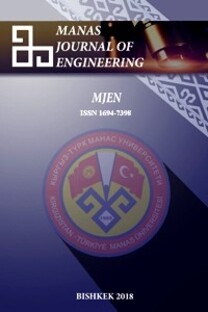Repeated Measures Analysis and Some Experimental Design Considerations in Animal Science
___
- L.K. LINDSEY, Models for Repeated Measurements Calerondon Press, Great Britain. 1994, p. 413.
- J.L. GILL, J. Animal Sci., 63 (1986) 943.
- B.S. EVERITT, Statistical Methods in Medical Investigations, John Wiley & Sons Inc., New York, 1994, p. 241.
- A. MINKE, Conducting Repeated Measures Analysis: Experimental Design Considerations, The Annual Meeting of the Southwest Educational Research Association, Austin, 1997.
- C. DYTHAM, Choosing and Using Statistics, Blackwell Science Ltd., Great Britain,. 2000, p. 218.
- P.R. KINNEAR, C.D. Gray, SPSS for Windows, Lawrence Erlbaum Associates Publishers, Ukrayna, 1995, p. 275.
- P.A. GRIEVE, Psychometrika., 49 (1984) 257.
- J. JACCARD, L. Ackerman, Journal of Consulting and Clinical Psychology., 53 (1985) 426.
- P.K. Tandon, M.L. Moeschberger, Commun. Statist. Simula., 18 (1989) 777.
- G.A. FERGUSON, Y. TAKANE, Statistical Analysis in Psychology and Education, McGraw-Hill Book Company, USA, 1989, p. 587.
- E.L. TOOTHAKER, Introductory Statistics for The Behavioral Sciences, Mc Graw- Hill Publishing Company, USA, 1986, p. 505.
- L.D. FISHER, G. VANBELLE, Biostatistics: A Methodology for The Health Sciences, John Wiley & Sons Inc., USA, 1993, p. 991.
- R.P. RUNYON, K.A. COLEMAN, D.J. PITTENGER, Fundamentals of Behavioral Statistics, McGraw-Hill Companies, 2000, p.634.
- J.L. GILL, Biometrics., 44 (1988) 289.
- N.H. TIMM, Multivarate analysis of variance of repeated measurements, ed. P.R. Krishnaiah, Vol. 1,(North-Holland Publishing Company, Holland. ). W.W. DANIEL, Biostatistics: A Foundation for Analysis in The Health Sciences, John Wiley & Sons Inc., Singapore, 1995, p. 780.
- J.H. ZAR, Biostatistical Analysis, Prentice Hall, USA, 1999, P.660.
- J.J. FOSTER, Data Analysis Using SPSS for Windows, Sage Publications, Great Britian, 1999, p. 224.
- S.E. MAXWELL, H.D. DELANEY, Designing Experiments and Analyzing Data, Wadsworth Publishing Company, USA, 1990, p. 902.
- Figure 1. Repeated measures analysis diagram in SPSS package. (a) data input box, (b) repeated measures analyze paths, (c) repeated measures define factor(s) dialog box, (d) repeated measures dialog box Factors Box BSF box Covariates box
- ISSN: 1694-7398
- Yayın Aralığı: 2
- Başlangıç: 2001
- Yayıncı: KIRGIZİSTAN-TÜRKİYE MANAS ÜNİVERSİTESİ
PARÇACIKLARI TAŞIMA İŞLERİNDE KONTROL EDEBİLME PROBLEMİNİN BİR ÇÖZÜMÜ
R.r. RAFATOV, V. ASİL, M. AYDOĞDU
DEVERAN KATSAYISINA GÖRE n ÇEŞİT POPULASYON VOLTERRA SİSTEMİNİN DENGELİĞİ
Обратная Задача Для Нелинейного Интегро-Дифференциального Уравнения
з.к. МАЙМЕКОВ, в.а. ЩЕРЕДИН, а.в. ЩЕРЕДИН, а.н. ЛАРИН, д.а. БЕЙШЕНКУЛОВА
